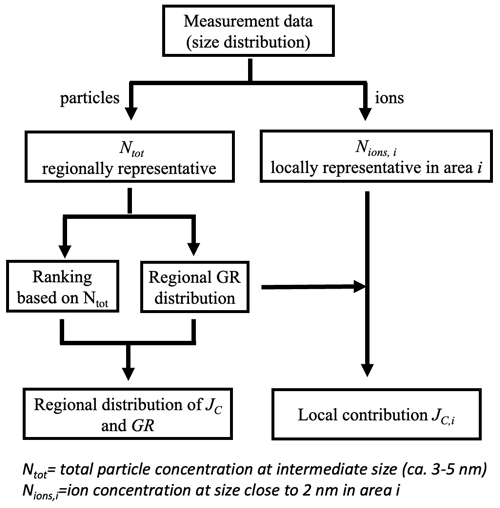A newly published opinion article in Copernicus Aerosol Research by FORCeS participants Tuukka Petäjä and Pauli Paasonen from University of Helsinki proposes a paradigm shift in atmospheric NPF investigations.
New particle formation (NPF) in the atmosphere, along with the creation of additional small particles, plays a significant role in the concentration of aerosol particles and fine particulate matter in many places worldwide. Recent studies have found that even on days when we don’t observe a clear NPF event, there’s still a notable increase in particle numbers due to atmospheric NPF. Moreover, across various environments globally, the rate at which these newly formed particles grow remains relatively consistent, even though the amount of condensable vapors present can vary significantly.
Additionally, it’s been noted that the initial clustering of particles, which often kick-starts the process of NPF on a regional scale, can be attributed to the formation of intermediate ions at very small sizes. These findings, along with a new ranking method, suggest a need to rethink how we investigate atmospheric NPF. In this paper, we’ll discuss the traditional approach to studying NPF in the atmosphere and propose an alternative method that considers both the formation of particles and their early growth stages.
To learn more about the opportunities and challenges associated with this new approach, read the article here: https://ar.copernicus.org/articles/2/49/2024/


